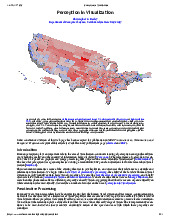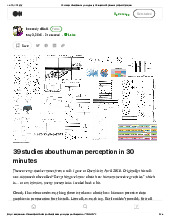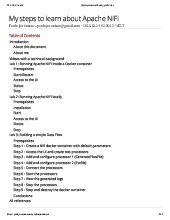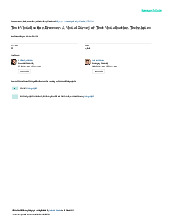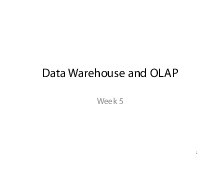



















Preview text:
Managing Data in Motion
This page intentionally left blank Managing Data in Motion Data Integration Best Practice Techniques and Technologies April Reeve
AMSTERDAM • BOSTON • HEIDELBERG • LONDON
NEW YORK • OXFORD • PARIS • SAN DIEGO
SAN FRANCISCO • SINGAPORE • SYDNEY • TOKYO
Morgan Kaufmann is an imprint of Elsevier
Acquiring Editor: Andrea Dierna
Development Editor: Heather Scherer
Project Manager: Mohanambal Natarajan Designer: Russell Purdy
Morgan Kaufmann is an imprint of Elsevier
225 Wyman Street, Waltham, MA 02451, USA
Copyright r 2013 Elsevier Inc. All rights reserved.
No part of this publication may be reproduced or transmitted in any form or by any means,
electronic or mechanical, including photocopying, recording, or any information storage
and retrieval system, without permission in writing from the publisher. Details on how to
seek permission, further information about the Publisher’s permissions policies and our
arrangements with organizations such as the Copyright Clearance Center and the Copyright
Licensing Agency, can be found at our website: www.elsevier.com/permissions.
This book and the individual contributions contained in it are protected under copyright
by the Publisher (other than as may be noted herein). Notices
Knowledge and best practice in this field are constantly changing. As new research and
experience broaden our understanding, changes in research methods or professional practices,
may become necessary. Practitioners and researchers must always rely on their own
experience and knowledge in evaluating and using any information or methods described
herein. In using such information or methods they should be mindful of their own safety
and the safety of others, including parties for whom they have a professional responsibility.
To the fullest extent of the law, neither the Publisher nor the authors, contributors, or
editors, assume any liability for any injury and/or damage to persons or property as a
matter of products liability, negligence or otherwise, or from any use or operation of
any methods, products, instructions, or ideas contained in the material herein.
Library of Congress Cataloging-in-Publication Data Application submitted
British Library Cataloguing-in-Publication Data
A catalogue record for this book is available from the British Library ISBN: 978-0-12-397167-8
For information on all MK publications
visit our website at www.mkp.com Printed in the USA 13 14 15 16 17 10 9 8 7 6 5 4 3 2 1 For my sons Henry
who knows everything and, although he hasn’t figured out exactly
what I do for a living, advised me to “put words on paper” and David
who is so talented, so much fun to be with, and always willing to go with me to Disney.
This page intentionally left blank Contents
Foreword ..................................................................................................................xv
Acknowledgements............................................................................................... xvii
Biography................................................................................................................xix
Introduction.............................................................................................................xxi
PART 1 INTRODUCTION TO DATA INTEGRATION
Chapter 1 The Importance of Data Integration ............................ 3
The natural complexity of data interfaces ........................................3
The rise of purchased vendor packages ............................................4
Key enablement of big data and virtualization.................................5
Chapter 2 What Is Data Integration? .......................................... 7
Data in motion ...................................................................................7
Integrating into a common format—transforming data....................7
Migrating data from one system to another......................................8
Moving data around the organization ...............................................9
Pulling information from unstructured data....................................11
Moving process to data ...................................................................12
Chapter 3 Types and Complexity of Data Integration ..................15
The differences and similarities in managing data in motion
and persistent data ...........................................................................15
Batch data integration......................................................................16
Real-time data integration ...............................................................16
Big data integration .........................................................................17
Data virtualization ...........................................................................17
Chapter 4 The Process of Data Integration
Development ...........................................................19
The data integration development life cycle...................................19
Inclusion of business knowledge and expertise ..............................20 PART 2 BATCH DATA INTEGRATION
Chapter 5 Introduction to Batch Data Integration .......................25
What is batch data integration?.......................................................25
Batch data integration life cycle .....................................................26 vii viii Contents
Chapter 6 Extract, Transform, and Load ....................................29
What is ETL?...................................................................................29
Profiling ...........................................................................................30
Extract ..............................................................................................30
Staging .............................................................................................31
Access layers ...................................................................................32
Transform.........................................................................................33
Simple mapping ..........................................................................33
Lookups.......................................................................................33
Aggregation and normalization ..................................................33
Calculation ..................................................................................34
Load .................................................................................................34
Chapter 7 Data Warehousing ...................................................37
What is data warehousing?..............................................................37
Layers in an enterprise data warehouse architecture ......................38
Operational application layer .....................................................38
External data ...............................................................................38
Data staging areas coming into a data warehouse .....................39
Data warehouse data structure....................................................40
Staging from data warehouse to data mart or
business intelligence ...................................................................40
Business Intelligence Layer........................................................40
Types of data to load in a data warehouse .....................................41
Master data in a data warehouse ................................................41
Balance and snapshot data in a data warehouse ........................42
Transactional data in a data warehouse .....................................43
Events..........................................................................................43
Reconciliation .............................................................................43
Interview with an expert: Krish Krishnan on
data warehousing and data integration............................................44
Chapter 8 Data Conversion ......................................................51
What is data conversion? ................................................................51
Data conversion life cycle ...............................................................51
Data conversion analysis .................................................................52
Best practice data loading ...............................................................52
Improving source data quality.........................................................53 Contents ix
Mapping to target ..........................................................................53
Configuration data .........................................................................54
Testing and dependencies..............................................................55
Private data ....................................................................................55
Proving ...........................................................................................56
Environments .................................................................................56
Chapter 9 Data Archiving .......................................................59
What is data archiving? .................................................................59
Selecting data to archive ...............................................................60
Can the archived data be retrieved?..............................................60
Conforming data structures in the archiving environment ...........61
Flexible data structures..................................................................61
Interview with an expert: John Anderson on data
archiving and data integration .......................................................62
Chapter 10 Batch Data Integration Architecture and
Metadata...............................................................67
What is batch data integration architecture?.................................67
Profiling tool ..................................................................................67
Modeling tool.................................................................................68
Metadata repository .......................................................................69
Data movement..............................................................................69
Transformation...............................................................................70
Scheduling......................................................................................71
Interview with an expert: Adrienne Tannenbaum on
metadata and data integration........................................................73
PART 3 REAL TIME DATA INTEGRATION
Chapter 11 Introduction to Real-Time Data Integration ..............77
Why real-time data integration?....................................................77
Why two sets of technologies?......................................................78
Chapter 12 Data Integration Patterns........................................79
Interaction patterns ........................................................................79
Loose coupling...............................................................................79
Hub and spoke ...............................................................................80
Synchronous and asynchronous interaction ..................................83 x Contents
Request and reply ..........................................................................83
Publish and subscribe ....................................................................84
Two-phase commit ........................................................................84
Integrating interaction types ..........................................................85
Chapter 13 Core Real-Time Data Integration
Technologies.........................................................87
Confusing terminology ..................................................................87
Enterprise service bus (ESB).........................................................88
Interview with an expert: David S. Linthicum on
ESB and data integration...............................................................89
Service-oriented architecture (SOA) .............................................90
Extensible markup language (XML).............................................92
Interview with an expert: M. David Allen on
XML and data integration .............................................................92
Data replication and change data capture .....................................95
Enterprise application integration (EAI).......................................97
Enterprise information integration (EII) .......................................97
Chapter 14 Data Integration Modeling ......................................99
Canonical modeling .......................................................................99
Interview with an expert: Dagna
Gaythorpe on canonical modeling and data
integration ...................................................................................100
Message modeling .......................................................................103
Chapter 15 Master Data Management..................................... 105
Introduction to master data management....................................105
Reasons for a master data management
solution.........................................................................................105
Purchased packages and master data ..........................................106
Reference data .............................................................................107
Masters and slaves .......................................................................107
External data ................................................................................110
Master data management functionality .......................................110
Types of master data management solutions—registry
and data hub.................................................................................111
Chapter 16 Data Warehousing with Real-Time Updates ........... 113
Corporate information factory.....................................................113
Operational data store..................................................................113 Contents xi
Master data moving to the data warehouse ................................116
Interview with an expert: Krish Krishnan on
real-time data warehousing updates ............................................116
Chapter 17 Real-Time Data Integration Architecture
and Metadata ...................................................... 119
What is real-time data integration metadata? .............................119
Modeling ......................................................................................120
Profiling .......................................................................................120
Metadata repository .....................................................................120
Enterprise service bus—data transformation
and orchestration..........................................................................121
Technical mediation................................................................122
Business content......................................................................122
Data movement and middleware.................................................123
External interaction......................................................................123
PART 4 BIG, CLOUD, VIRTUAL DATA
Chapter 18 Introduction to Big Data Integration....................... 127
Data integration and unstructured data .......................................127
Big data, cloud data, and data virtualization ..............................127
Chapter 19 Cloud Architecture and Data Integration ................ 129
Why is data integration important in the cloud? ........................129
Public cloud .................................................................................129
Cloud security ..............................................................................130
Cloud latency ...............................................................................131
Cloud redundancy ........................................................................132
Chapter 20 Data Virtualization ............................................... 135
A technology whose time has come ...........................................135
Business uses of data virtualization ............................................137
Business intelligence solutions ...............................................137
Integrating different types of data ..........................................137
Quickly add or prototype adding data to a data
warehouse................................................................................137
Present physically disparate data together .............................138
Leverage various data and models triggering
transactions..............................................................................138 xii Contents
Data virtualization architecture ...................................................138
Sources and adapters...............................................................138
Mappings and models and views ...........................................138
Transformation and presentation ............................................139
Chapter 21 Big Data Integration ............................................. 141
What is big data? .........................................................................142
Big data dimension—volume ......................................................142
Massive parallel processing—moving
process to data.........................................................................142
Hadoop and MapReduce.........................................................143
Integrating with external data.................................................144
Visualization ...........................................................................144
Big data dimension—variety.......................................................145
Types of data...........................................................................145
Integrating different types of data ..........................................145
Interview with an expert: William McKnight
on Hadoop and data integration ..................................................145
Big data dimension—velocity .....................................................146
Streaming data ........................................................................147
Sensor and GPS data ..............................................................147
Social media data....................................................................147
Traditional big data use cases .....................................................147
More big data use cases ..............................................................148
Health care ..............................................................................148
Logistics ..................................................................................148
National security .....................................................................149
Leveraging the power of big data—real-time decision
support..........................................................................................149
Triggering action.....................................................................149
Speed of data retrieval from memory versus disk .................150
From data analytics to models, from streaming
data to decisions......................................................................150
Big data architecture....................................................................151
Operational systems and data sources ....................................151
Intermediate data hubs............................................................151
Business intelligence tools......................................................152
Data virtualization server........................................................153 Contents xiii
Batch and real-time data integration tools .............................153
Analytic sandbox ....................................................................153
Risk response systems/recommendation engines...................153
Interview with an expert: John Haddad on
Big Data and data integration .....................................................154
Chapter 22 Conclusion to Managing Data in Motion ................ 157
Data integration architecture .......................................................157
Why data integration architecture? ........................................157
Data integration life cycle and expertise................................158
Security and privacy ...............................................................158
Data integration engines ..............................................................160
Operational continuity ............................................................160
ETL engine .............................................................................160
Enterprise service bus .............................................................161
Data virtualization server........................................................161
Data movement .......................................................................162
Data integration hubs...................................................................162
Master data..............................................................................163
Data warehouse and operational data store............................164
Enterprise content management .............................................164
Data archive ............................................................................164
Metadata management .................................................................164
Data discovery ........................................................................165
Data profiling ..........................................................................165
Data modeling.........................................................................165
Data flow modeling ................................................................165
Metadata repository ................................................................166
The end ........................................................................................166
References..............................................................................................................167
Index ......................................................................................................................169
This page intentionally left blank Foreword
Data integration has been the information systems profession’s most enduring challenge.
It is almost four decades since Richard Nolan nominated data administration
as the penultimate stage of his data processing maturity model, recognizing that
the development of applications to support business processes would, unless prop-
erly managed, create masses of duplicated and uncoordinated data.
In the early days of database technology, some of us had a dream that we
could achieve Nolan’s objective by building all of our organizations’ databases in
a coordinated manner to eliminate data duplication: “Capture data once, store it
in one place, and make it available to everyone who needs it” was the mantra.
Decentralized computing, packaged software, and plain old self-interest put an
end to that dream, but in many organizations the underlying ideas lived on in the
form of data management initiatives based on planning and coordination of data-
bases—notably in the form of enterprise data models. Their success was limited,
and organizations turned to tactical solutions to solve the most pressing problems.
They built interfaces to transfer data between applications rather than capturing it
multiple times, and they pulled it together for reporting purposes in what became
data warehouses and marts. This pragmatic approach embodied a willingness to
accept duplicated data as a given that was not attractive to the purists.
The tension between a strategic, organization-wide approach based on the dis-
position of data and after-the-fact spot solutions remains today. But the scale of
the problem has grown beyond anything envisaged in the 1970s.
We have witnessed extraordinary advances in computing power, storage tech-
nology, and development tools. Information technology has become ubiquitous in
business and government, and even midsized organizations count their applica-
tions in the thousands and their data in petabytes. But each new application, each
new solution, adds to the proliferation of data. Increasingly, these solutions are
“off the shelf,” offering the buyer little say in the database design and how it
overlaps with existing and future purchases.
Not only has the number of applications exploded, but the complexity of the
data within them is worlds away from the simple structures of early files and
databases. The Internet and smartphones generate enormous volumes of less
structured data, “data” embraces documents, audio and video, and cloud comput-
ing both extends the boundary of the organization’s data and further facilitates
acquisition of new applications.
The need for data integration has grown proportionately—or more correctly,
disproportionately, as the number of possible interfaces between systems
increases exponentially. What was once an opportunistic activity is becoming, in
many organizations, the focus of their systems’ development efforts. xv xvi Foreword
The last decade has seen important advances in tools to support data integra-
tion through messaging and virtualization. This book fills a vital gap in providing
an overview of this technology in a form that is accessible to nonspecialists:
planners, managers, and developers. April Reeve brings a rare combination of
business perspective and detailed knowledge from many years of designing,
implementing, and operating applications for organizations as an IT technician,
manager and, more recently, a consultant using the technologies in a variety of different environments.
Perhaps the most important audience will be data managers, in particular those
who have stuck resolutely to the static data management model and its associated
tools. As the management of data in motion comes to represent an increasing pro-
portion of the information technology budget, it demands strategic attention, and
data managers, with their organization-wide remit, are ideally placed to take respon-
sibility. The techniques in this book now form the mainstream of data integration
thinking and represent the current best hope of achieving the data administration
goals Nolan articulated so long ago. —Graeme Simsion Acknowledgements
First of all, I want to acknowledge the contribution of my husband, Tom Reeve,
who said I had to acknowledge him for making me dinner. During the course of
writing this book he made me dinner hundreds of times. Additionally, he put up
with my constant mantra that “I have to write” instead of doing so many other
things such as exercising or cleaning the house.
Of course I want to acknowledge the generosity of time and effort from all the
data management experts that gave me interviews to use in this book: •
Let me start with David Allen who was my co-presenter at the tutorial we
gave on this subject at the EDW conference in Chicago in 2011 and teaches
me something fascinating about XML and JSON every time I see him,
without him even knowing he is doing it. •
Krish Krishnan provided an abundance of information on his experience with
data integration in data warehousing and set a wonderfully high standard for the expert interviews. •
James Anderson jumped in quickly when I lost my previous data archiving expert
and it turns out we used to work together and now we are reconnected again. •
It was a pleasure to reconnect also with Adrienne Tannenbaum and get her
perspective on metadata and data integration. •
I’ve always said that the more experienced we are the more we hate our tools,
because we know the limitations, and it was great to get Dave Linthicum to
look back on some of his experiences with enterprise service buses and the
times when he might have had a love/hate relationship with them. •
I was very excited to get an interview with Dagna Gaythorpe, with all her
experience in data modeling and its challenges, who provided a practitioners
view on canonical data modeling that I found surprisingly optimistic. •
William McKnight helped me to get a handle on Hadoop, which is a critical
subject for a current book on data integration. •
I met John Haddad when we were both on a Big Data panel at EDW 2012 and
he generously offered to help me with this book, which he did by reading and
providing feedback on some of the early sections as well as a perfect interview on big data. •
Although Mike Ferguson couldn’t provide an interview, attending his
workshop did provide me with a great deal of my understanding of data
virtualization, which is a core concept in big data integration.
Karl Glenn was one of the technical reviewers of the book and I appreciated
his perspective and advice very much. It was amazing to discover someone who
lived on another continent and yet shared much of my understanding and perspec-
tive regarding best practices with data integration.
And one last shout out for my editor, Andrea Dierna, who is amazingly calm in a crisis. xvii
This page intentionally left blank Biography
April Reeve has spent the last 25 years working as an enterprise architect and
program manager for large multinational organizations, developing data strate-
gies and managing development and operation of solutions. April is an expert
in multiple data management disciplines including data conversion, data ware-
housing, business intelligence, master data management, data integration, and
data governance. Currently, she is working for EMC2 Consulting as an Advisory
Consultant in the Enterprise Information Management practice. xix
